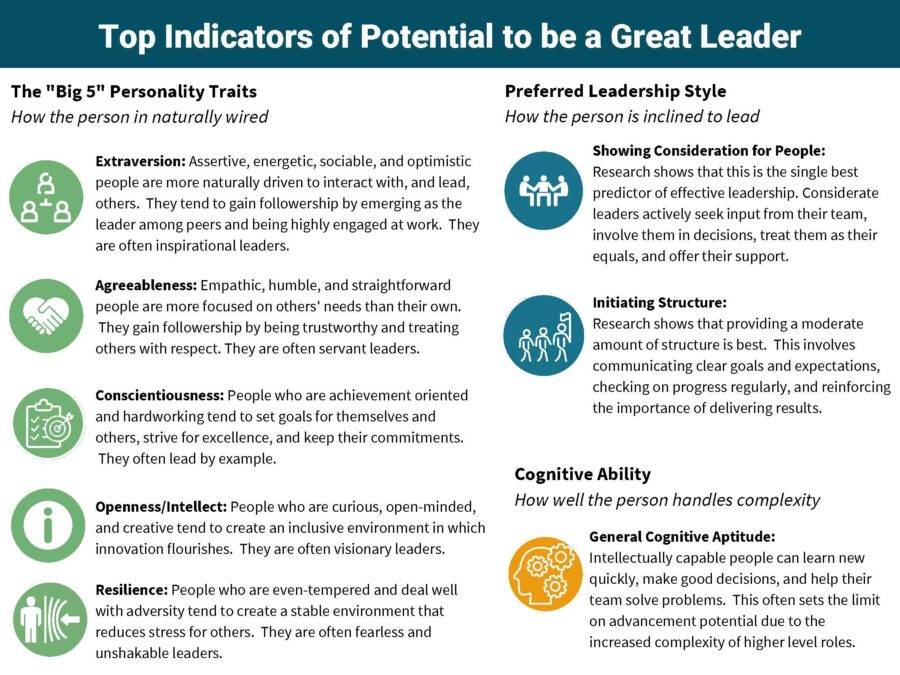High Potential Assessments
High performers aren’t always high potentials.
We show you the difference.
Many organizations have trouble selecting the right people for their high potential talent programs because they use performance to determine potential. A recent article from the Talent Strategy Group brings this issue to light and gives suggestions for how to accurately identify high potentials through a formal talent review process. A Forbes article also describes this problem and offers a solution: Use objective assessments to identify high potential talent. PCI’s High Potential Assessments provide an objective, unbiased evaluation that’s proven to predict advancement and accelerate growth.

High Potential Assessment Process Overview
Psychometric tools
Reliable, valid measures of the Five-Factor Model of personality, career stallers and derailers, problem-solving/critical thinking, and leadership style preferences. It takes about 2 hours to complete. These tools serve as the basis for identifying the person's potential.
Structured Phone interview
The interview questions are designed to get a read on how self-aware the person is and how eager they are to learn and grow. The psychologist also gives the participants feedback on the online assessments and an opportunity to share their reactions. This puts the psychometric data into context.
Data Interpretation
Two psychologists review the psychometric data and interview notes. They independently assign competency ratings and an overall potential rating using a structured process. This ensures objectivity and reliability. And, higher objectivity and reliability means a more valid predictor of high-potential talent.
Deliverables for High Potential Assessments
Insights Report
The psychologist writes a report to help the person understand their strengths and growth opportunities.
Ratings of Potential
Assessment ratings show you who your hi-pos really are, who might have some room to grow, and who has limited runway.
Debrief & Discussion
We meet with your hi-po program leaders to discuss how to leverage the data to help each participant maximize their potential.
When Should You Use High Potential Assessments?
Most of our clients ask us to conduct an assessment for people already selected into their High Potential program. And, every time, we end up with a normal distribution on the Overall Potential Ratings. What does this mean?
- Most people (about 60%) thought of as “high potential” have average potential.
- About 20% have low potential for advancement.
- About 20% actually have high potential.
- Budgets are being spent on people who are very unlikely to be your best future leaders.
- By using the assessment to help select people into your high potential program, you’ll get a better return on your investment.
However, we understand that many factors influence a decision about when to use high potential assessments. And, we’re happy to provide assessments of people already in your program. Everyone will benefit from their developmental report, regardless of their overall potential. There also will be overachievers who will shine in your program and someday become high-performing leaders. And, you can tailor developmental activities that are supplemental to your core program based on each participant’s assessment results.